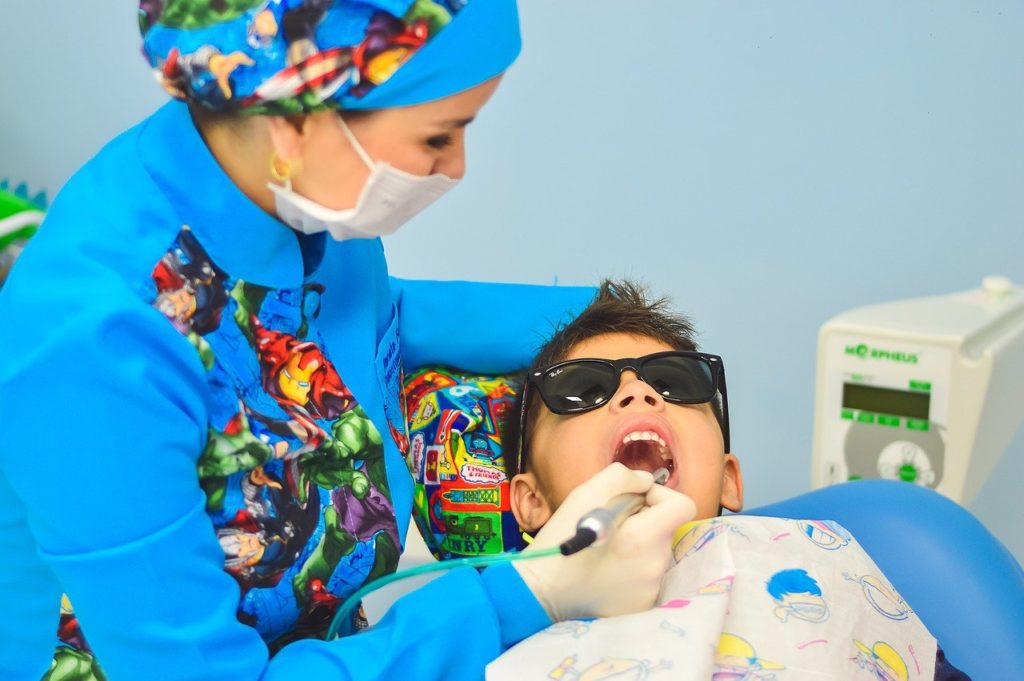Dental health is integral to child development as it sets the foundation for a lifetime of healthy teeth, gums, and oral health. As parents, we are responsible for teaching children the proper dental practices that will continue into adulthood. This post will discuss the seven healthy dental habits that are encouraged for children.
[Read more…]Top 5 Worst Soft Drinks for Teeth
Despite the constant negative press that soft drinks receive in the media, Americans are hard-pressed to stop consuming their favorite sugary beverages. Every restaurant offers at least five different soft drink options, and every cafeteria or business has at least one vending machine that offers up to ten or more different sodas, sometimes for less than a dollar. Even convenience stores in America have prominent soft drink fountains, some even offering cups that can hold nearly a liter of sweet syrupy soda at a single time. It also comes in convenient plastic bottles ranging in size, along with the classic pop cans that can be found at retailers almost everywhere. Needless to say, soft drinks are an American favorite, and they are available nearly everywhere.
White Teeth don’t Always Mean Healthy Teeth
High-definition television, photography, and media have skewed the public’s perceptions of what natural teeth look like in the western world, particularly in America. In addition to higher detailed images of teeth, there’s also the influence of photo manipulation software that has allowed designers of ads and pop culture media to alter and “perfect” human features, like making teeth appear impossibly white, straight, and flawless.
Does Sugar-Free Gum Fight Cavities?
Chewing gum was once a sweet treat akin to candy, but modern science and technology have turned this sticky substance into much more over the past few decades. With the help of sugar-free sweeteners like xylitol and sorbitol, gum is now enjoyed more often, and it has even taken on some important roles in the oral health department. Many parents are apprehensive about allowing their children to chew gum regularly, but more and more we are learning that it can actually have overall positive effects, permitting that their child is old enough to chew responsibly. Breaking down the claims of gum chewing’s benefits makes it clear that it can safely become a post-meal practice or any time the mouth needs freshening.
Childhood Eating Disorders and Oral Health
With childhood obesity and food allergies and sensitivities on a consistent rise among American children, parents are becoming more and more aware of how they feed their children and how often. Sometimes there is more to a child’s diet than merely monitoring and influencing positive choices and habits. Unfortunately, health professionals are seeing eating disorders develop in children even under the age of 12, which is most commonly seen as a prepubescent time when the body is changing. Understanding the cause of eating disorders among children is a complicated task, and even the most skilled and experienced experts cannot offer definitive reasoning or explanation as to why and how they tend to develop other than a collection of hypotheses. What we do know, however, is how certain eating disorders in children and young adults can affect dental health, and the signs to look for in order to prevent major oral hygiene issues in a parent’s and child’s future.
Dealing with your Child’s Dental Anxiety
Dental anxiety among children is quite common but can be especially frustrating for new parents, or parents of multiple children while managing proper dental hygiene throughout childhood. The fear of seeing a medical professional of any kind is entirely normal, just like fearing monsters under the bed and closet before bedtime. Many children quickly grow out of this fear after a few harmless and straightforward visits to the dentist, while others may manifest this fear into something more. Children unable to cope with their fear of the dentist can potentially develop deep-rooted anxiety that can make regular dental visits an ordeal for both parent and child. Rest assured, pediatric dentists are trained to deal with situations like these and have the tools to help parents and children deal with dental anxiety and eventually overcome it, in some cases.
COVID-19: The New Norm for a Kid’s Dental Visit
Across the entire country, people are facing an unprecedented amount of uncertainty as the COVID-19 pandemic continues to spread, affecting millions of families. While most essential businesses closed down for several weeks, many are now back up and running, especially medical facilities. A patient’s health and safety is always the main concern for any medical provider, dentists included. Despite the precautions of staying at home and social distancing as much as possible, oral health should not suffer on the sidelines.
What You Should Do Now For Your Child’s Long-Term Mouth Health
As a parent, you are responsible for instilling good habits into your children, helping them grow into healthy and responsible adults. While it sounds simple, the task is not always easy when dealing with little humans whose brains are still developing and can’t always grasp logic and reason. However, mouth health is absolutely not something that should ever be compromised as dental health is a major part of a person’s overall well-being. That means that many parents are facing dental-related challenges at home from the time their children are tiny toddlers to tumultuous teenagers. While the scary stigma surrounding visiting the dentist is something that hygienists are still trying to tackle even with modern day advancements making checkups and procedures painless and comfortable, there are preventative measures you can take to ensure your children will have adequate long-term mouth health.
How to Help Your Child Feel More Comfortable Going to the Dentist
Dentistry has made great efforts to improve the previously “scary” reputations that many dentists undeservingly get. Many parents today can think back to times where going to the dentist was one of their greatest fears, and many of the devices used by hygienists looked like archaic torture devices. Thankfully, with the aid of scientific developments, going to the dentist has become much less intimidating and painful than it was some 30 years ago. Even so, many kids still begin to fear the dentist at an early age, even if they haven’t yet had a bad experience or extensive dental work done. Just like adults, children relay information to one another, and many times these irrational fears of the dentist can come from stories they hear from other children or the portrayal of dentists as scary in children’s books and cartoons. This, of course, makes your job as a parent much more difficult, especially because going to the dentist is an important event in early childhood and can prevent major problems down the line.
Bite Problems that Can Develop in Your Child’s Teeth – How Can You Prevent Them?
Many of us don’t give too much thought to our bite patterns, especially if we were lucky enough to have good dental genes that have been passed down from our parents. However, some of us were the kids who had to have more than one round of braces and even the dreaded headgear that came along with extensive bite issues that we developed as children. Since the 1990s, orthodontics have greatly advanced, but no parent wants their child to experience the pain and discomfort that can come with bite issues and extensive braces, expanders, and other mechanisms that are used to correct irregular bite patterns. While it’s not always possible to prevent bite misalignment, there are steps to take to ensure you are monitoring your child’s jaw and bite development as they are growing in order to take action early on, if it’s needed.
 Directions
Directions









